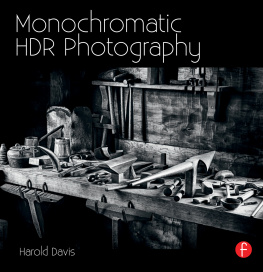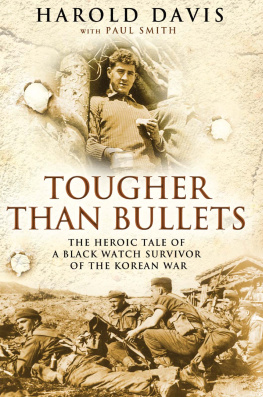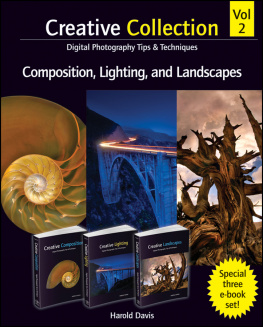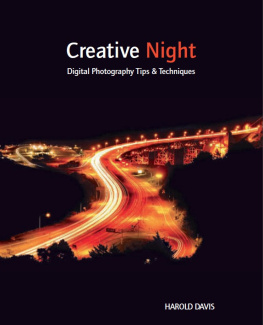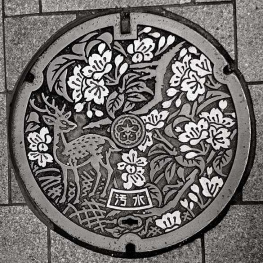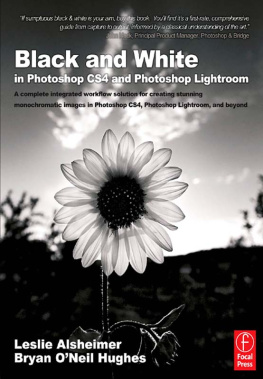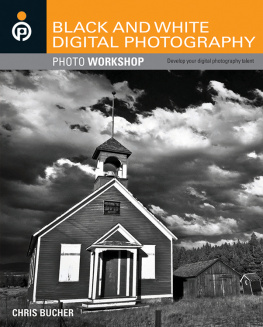
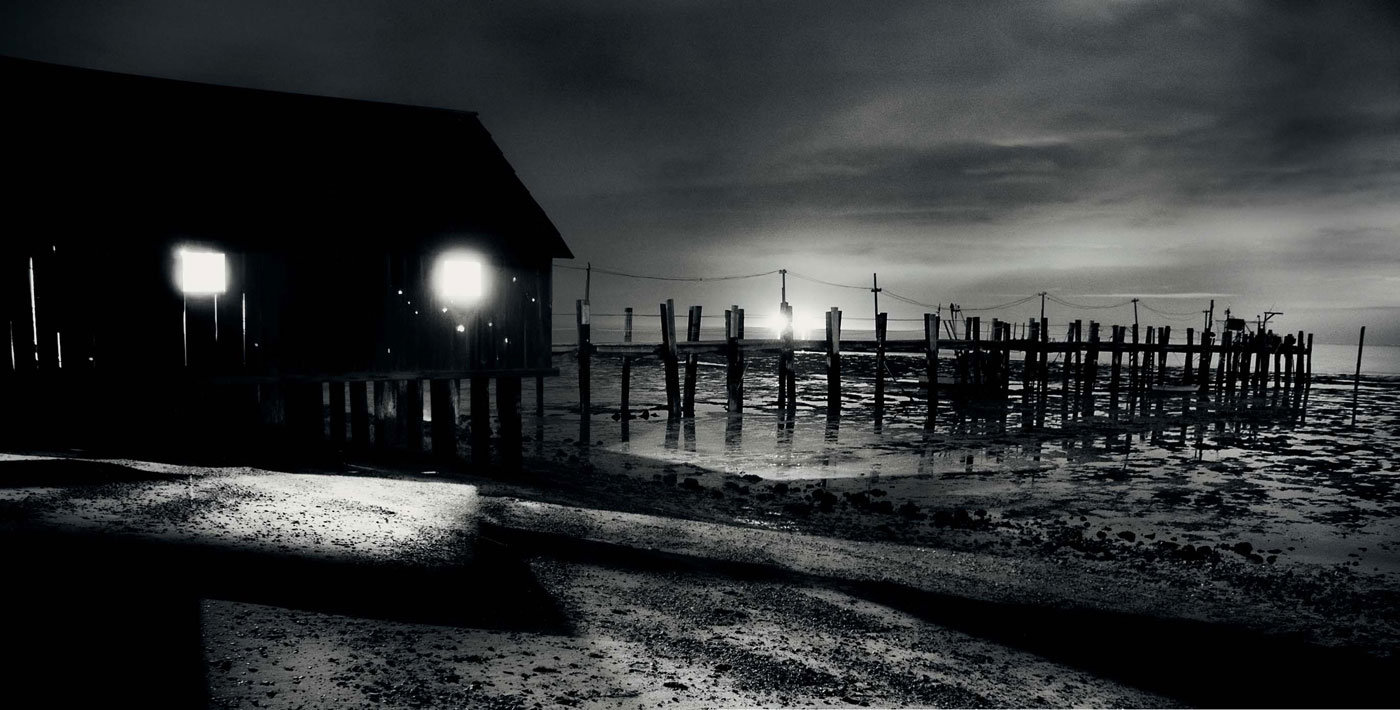
Monochromatic HDR Photography
SHOOTING AND PROCESSING BLACK & WHITE HIGH DYNAMIC RANGE PHOTOS
HAROLD DAVIS

Acknowledgments
Very special thanks to Nancy Bell, Mark Brokering, Deirdre Byrne, Sin Cahill, Gary Cornell, Martin Davis, Virginia Davis, Barbara Hopper, Ronna Lichtenberg, Marc Schotland, Janet Tollund, Matt Wagner, and Mike Watsonand a special shout out to the wonderful participants in the 2013 Photograph Paris with Harold Davis workshop!
First published 2014 by Focal Press
70 Blanchard Road, Suite 402, Burlington, MA 01803
Simultaneously published in the UK by Focal Press
2 Park Square, Milton Park, Abingdon, Oxon OX14 4RN
Focal Press is an imprint of the Taylor & Francis Group, an informa business
2014 Harold Davis and Phyllis Davis
All photographs Harold Davis
The right of Harold Davis and Phyllis Davis to be identified as the authors of this work has been asserted by them in accordance with sections 77 and 78 of the Copyright, Designs and Patents Act 1988.
All rights reserved. No part of this book may be reprinted or reproduced or utilized in any form or by any electronic, mechanical, or other means, now known or hereafter invented, including photocopying and recording, or in any information storage or retrieval system, without permission in writing from the publishers.
Notices
Knowledge and best practice in this field are constantly changing. As new research and experience broaden our understanding, changes in research methods, professional practices, or medical treatment may become necessary.
Practitioners and researchers must always rely on their own experience and knowledge in evaluating and using any information, methods, compounds, or experiments described herein. In using such information or methods they should be mindful of their own safety and the safety of others, including parties for whom they have a professional responsibility.
Product or corporate names may be trademarks or registered trademarks, and are used only for identification and explanation without intent to infringe.
Library of Congress Cataloging in Publication Data
Application submitted.
British Library Cataloguing in Publication Data
A catalogue record for this book is available from the British Library.
ISBN: 978-0-415-83145-1 (pbk)
ISBN: 978-0-203-73877-1 (ebk)
Typeset in Arno Pro, Existance and Museo Slab.
Book design and layout: Phyllis Davis
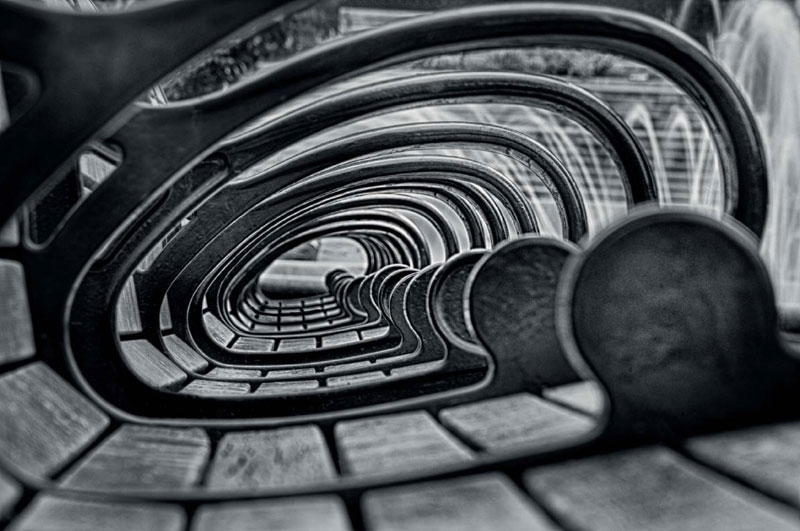
Contents

Have you ever had a photo that looked great in your minds eyeor even in your viewfinder or LCDand then turned out, well, blah?
Weve all have had this experience. Every photographer, no matter how gifted, whether they are professional or amateur, has had photographers remorse. This is when the image that looked so great at the time of capture turns out to be mundane in the cold light of inspection on the computer, or even after post-production is finished.
The purpose of this book is to show you how you can stop the photo blahs and create the powerful images that correspond to what you see in your minds eyewith one very specific kind of digital imagery: black and white photography with an extended tonal range.
I am going to let you in on a powerful secret of digital workflow: how to turn average photos into compelling works of black and white art. Its important to be able to see creatively and originally. Mastering craft and technique can help you realize this vision. If you are interested in black and white, Monochromatic HDR Photography will show you the techniques you need to know to turn your creative vision into a reality.
But before I get started I need to explain some preliminary concepts, and define some terminology.
First, I want to tell you a bit about digital photography, and maybe shift the way you think about it a bit.
To professional photographers operating in the world of film not so long ago, digital photography seemed highly disruptive. But for most photographers working today there is more of a sense of continuity rather than disruption. Professional and prosumer DSLR cameras look pretty much like film SLRs. For most photographers, the normal workflow of taking photos and printing them is much as it ever was.
This sense of continuity isnt right, because the possibilities inherent in photography, and the way one should shoot, have changed irrevocably with the transition from analog to digital. A digital camera is no longer an optical device capturing light on an emulsion. The optics are still there, but the camera intermediates between the lens and a digital scanner (the sensor), which stores data that is then processed by a computer. The computer is either onboard the camera or a standalone (maybe on your desktop) for post-production.

This detail from my image of the restored workshop at Fort Ross State Park shows a few of the tools. The shooting conditions at the workshop were less than ideal: my boys running amok, a mesh screen between me and the workshop, and other visitors bumping my tripod. But the lighting was wonderful, lending itself to creating a monochromatic image, so I shot off a series of six bracketed shots (in color) to capture the entire dynamic range. (For more about this image, turn to .)
46mm, six exposures at shutter speeds ranging from 1/8 of a second to 25 seconds, each exposure at f/9 and ISO 100, tripod mounted.
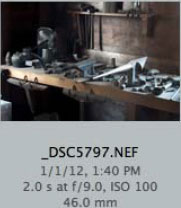

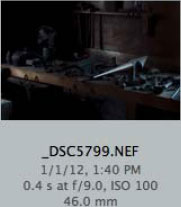
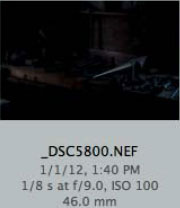
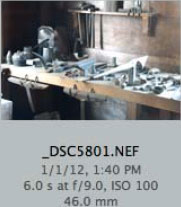
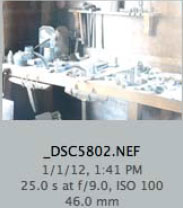
The six exposures I shot, under somewhat adverse field conditions, ranged in exposure time from 1/8 of a second and almost black (number 5800) to 20 seconds (number 5802), clearly overexposed. None of these individual exposures is perfect, but each has some information that can be used in the final composite image.

